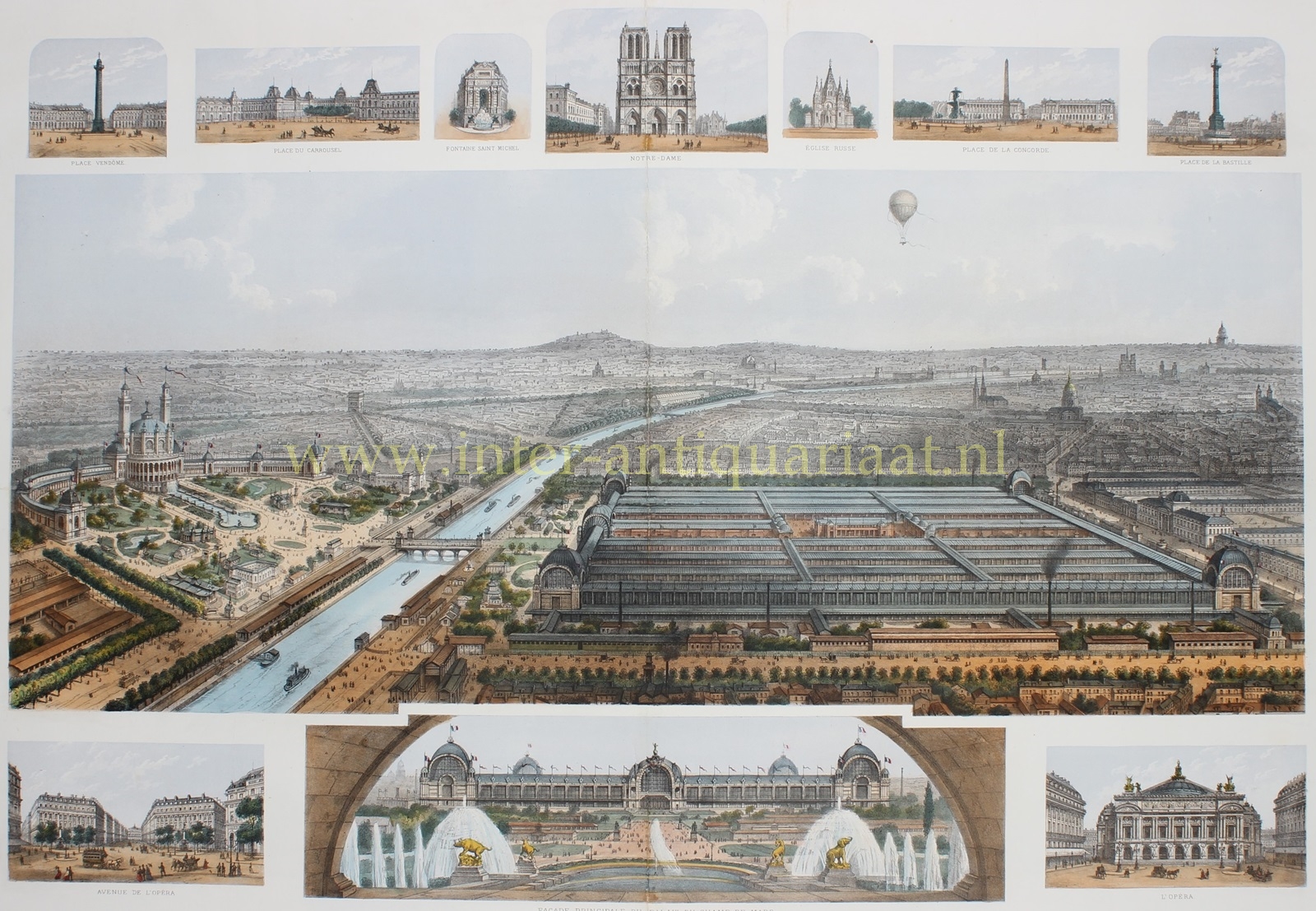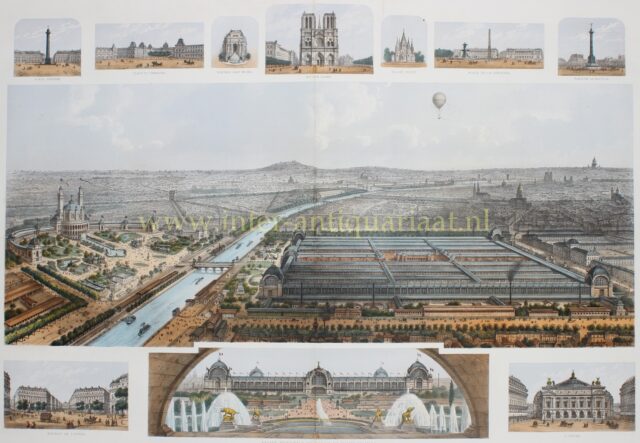Wereldtentoonstelling Parijs 1878 – Leon-Auguste Asselineau
“Paris et L’Exposition Universelle de 1878“, lithograph (mounted on modern linen) made by Leon-Auguste Asselineau and printed by Frick fils…
Lees verder€1.950
“Paris et L’Exposition Universelle de 1878“, lithograph (mounted on modern linen) made by Leon-Auguste Asselineau and printed by Frick fils in 1878. Size: approx.. 55 x 74 cm.
This rare and large lithograph shows Paris during the 1878 World Exposition, a world’s fair held from 1 May to 10 November 1878, to celebrate the recovery of France after the 1870–71 Franco-Prussian War.
This exposition was on a far larger scale than any previously held anywhere in the world. It covered over 270,000 m2, the main building in the Champ de Mars and the hill of Chaillot, occupying 220,000 m2. The Pont d’Iéna linked the two exhibition sites along a central allée.
Many of the buildings and statues were made of staff, a low-cost temporary building material invented in Paris in 1876, which consisted of jute fiber, plaster of Paris, and cement.
On the northern bank of the Seine River, an elaborate palace was constructed for the exhibition at the tip of the Place du Trocadéro. It was a handsome “Moorish” structure, with towers 76 metres in height and flanked by two galleries. (The building stood until 1937.) On 30 June 1878, the completed head of the Statue of Liberty was showcased in the garden of the Trocadéro palace, while other pieces were on display in the Champs de Mars.
Among the many inventions on display was Alexander Graham Bell’s telephone. Electric arc lighting had been installed all along the Avenue de l’Opera and the Place de l’Opera, and in June, a switch was thrown and the area was lit by electric Yablochkov arc lamps. Thomas Edison had on display a megaphone and phonograph.
The central bird’s-eye overview (with hot air balloon!) is surrounded by highlights Paris had (and has) to offer: the Place Vendôme, the Place du Carroussel, the Fontaine Saint-Michel, the Notre Dame, the Russian Alexander Nevsky Cathedral, the Place de la Concorde, the Place de la Bastille, the grand Avenue de l’Opéra, the principal façade of the Palais du Champ de Mars (on the place of which Gustave Eiffel would build his tower at the next World Exhibition in 1889), and the Opéra house.
Landscape painter Leon-Auguste Asselineau (1808-1889) created a number of lithographic views of cities. Later in his career, he moved to Normandy, where he became a noted painter of Ocean Liners.
Price: Euro 1.950,-


